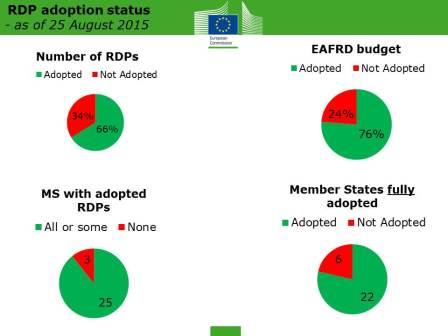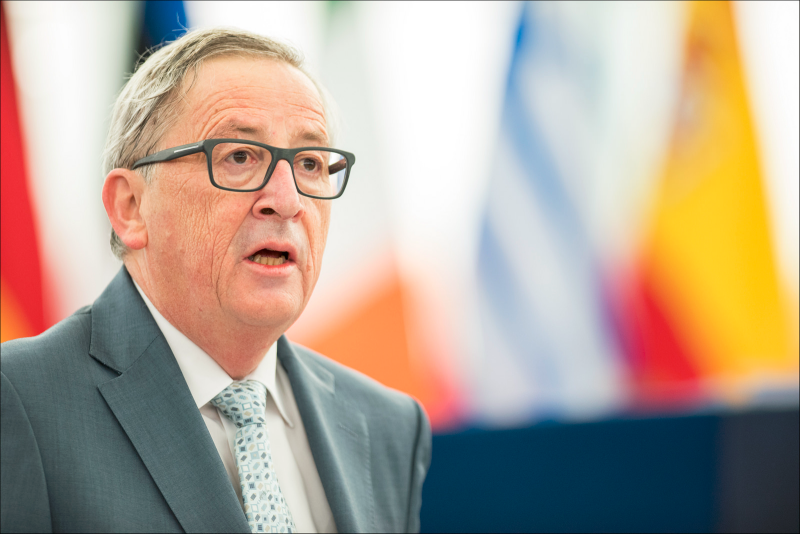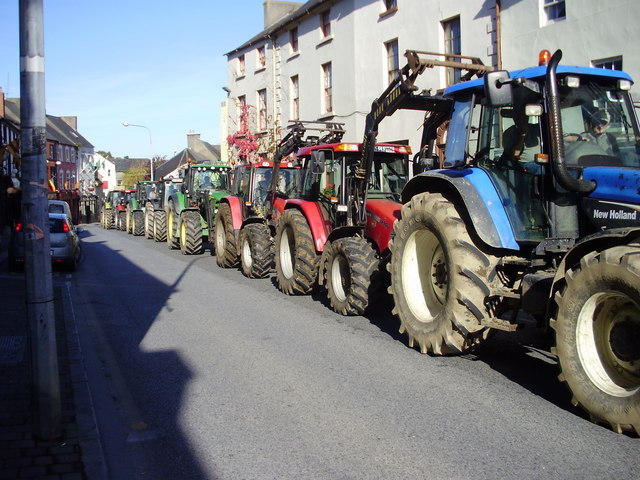Imagine a scenario where UK voters go to the polls later this year to vote on whether to remain in or leave the EU, while at the same time in Brussels a debate is in full swing over whether to increase the ceilings for the 2014-2020 Multi-annnual Financial Framework (MFF), and thus the UK contribution to the EU budget. This seems to be the nightmare scenario behind the story carried by Euractiv earlier this week based on the views of an anonymous EU official and which declared that “the major event in the calendar of the Juncker Commission, the midterm review of the European Union’s 7 year budget, has been effectively cancelled”.… Read the rest
Gainers and losers from the CAP budget
In thinking about the prospects for a future CAP reform, one of the relevant factors is the political economy of member states’ negotiating positions, which in turn is heavily influenced by their net position as a contributor to or a beneficiary from CAP expenditure. Countries are more likely to defend a high level of CAP expenditure if they are likely to benefit from it. The net transfers arising from the CAP budget are thus an important predictor of a country’s stance on CAP reform.
These net transfer positions are not routinely published, although DG Budget provides the raw data in its annual calculation of the ‘operating budgetary balances’ of member states.… Read the rest
€500 million farm aid package announced
The farm aid package announced by the Commission (in the form of Vice-President Jyrki Katainen in the absence of Commissioner Hogan due to illness) at the extraordinary Agriculture Council yesterday exceeded the expectations raised by the Presidency background paper in a number of respects (the elements of which related to dairying I discussed in this post), but fell short of what some Ministers had sought and what the farm organisations deemed satisfactory. The Council’s conclusions can be accessed here.
In my view, the package is a measured response to the difficulties in some specific farm sectors and, indeed, the Commissioner has held his nerve in the face of demonstrations and protests.… Read the rest
Status update on Rural Development Programmes
DG AGRI was able to announce in this past week that it had approved a further 5 Rural Development Programmes (RDPs) for the period 2014-2020. This means that 78 of the 118 RDPs have now been adopted covering 76.6% of the envisaged funding. The state of play (as of the end of August) is shown in the graphic below. Note that one-third of RDPs still remain to be adopted at this point, even if they account for less than 25% of the envisaged expenditure.
 Source: DG AGRI
Source: DG AGRI
Reasons for delays need to be examined
When the approval exercise is completed, we will need an investigation into the reasons for these unacceptable delays and some allocation of responsibility between possible contributing factors.… Read the rest
Impact of the MFF negotiations on the CAP 2013 reform
The CAP 2013 reform was the first negotiated under the ordinary legislative procedure (co-decision) in which both the Parliament and the Council had equal powers. A project undertaken by the Centre for European Policy Studies in Brussels for the European Parliament’s Policy Department has sought to examine what impact and influence the Parliament had on the CAP 2013 out-turn as a result of co-decision. Did co-decision give the Parliament a greater opportunity to influence the final outcome, who were the key players in shaping the Parliament’s views and what did the Parliament use its influence to achieve?
The final study, when it is published, will throw light on these issues.… Read the rest
The 2015 EU budget and agricultural spending
A provisional agreement has now been reached on the 2015 EU budget between the Council and Parliament following their inability to reach an agreement on the Commission’s first draft budget proposal in November (read here the reactions to the deal of the Commission, of the Council and of the Parliament). In terms of the headline figures for overall EU spending, the agreement is closer to the Council’s position, particularly in terms of payment appropriations, an outcome which was predicted as a consequence of the Lisbon Treaty changes in a series of papers by Giacomo Benedetto of the University of London.… Read the rest
Farmers may have to pay for Russian crisis aid
One of the successes of outgoing Agriculture Commissioner Dacian Ciolos in the 2013 CAP reform was to maintain the size of the CAP budget in the 2014-2020 multi-annual financial framework (MFF), at least in nominal terms (and even in real terms in the Commission’s original proposal). This was no mean achievement given the extent of the financial crisis in Europe, the pressures on public spending and the competing demands for spending at EU level.
His success was due to persuading his fellow Commissioners that a larger share of the CAP budget would be devoted to paying for public goods, particularly environment and climate actions.… Read the rest
The draft 2015 CAP budget
The annual budget is an important statement of any organisation’s strategic priorities. The EU budget is no exception, but its sheer size and complexity makes it difficult for the interested lay person to interpret and to understand.
The Commission proposed a draft budget (DB) for 2015 in June, and the figures are now under negotiation between the two legislative institutions. Since the Lisbon Treaty, the annual budget is agreed by co-decision between the Council and the Parliament, although the outcome must observe the ceilings agreed in the 2014-2020 multiannual financial framework (MFF).
Once the draft budget is proposed, the Council first adopts its position and forwards it to the European Parliament (EP).… Read the rest
More on Pillar 2 allocations by member state
In a previous post I commented that a noteworthy aspect of the Ciolos CAP reform was that, unlike previous reforms, it explicitly proposed to redistribute CAP resources between the member states and between farmers within member states. In writing this I was thinking primarily of Pillar 1 payments. Pillar 2 allocations between member states have been more variable, although still largely influenced by historical amounts (Zahrnt discusses the evolution of Pillar 2 shares in this European Parliament paper).
Also on this occasion, the Commission proposed (in its MFF budget proposals) that the distribution of Pillar 2 rural development support should be based on objective criteria linked to the policy objectives taking into account the current distribution.… Read the rest
Does national spending on agriculture follow a different path to the CAP?
In evaluating the pattern of budget transfers to agriculture, most of the focus is on the transfers through the EU budget. The negotiations on the Multi-annual Financial Framework (MFF) were closely followed because of their importance for the size of the CAP budget in the overall EU budget in the coming programming period.
However, in addition to EU transfers farmers also receive significant transfers from member state budgets. These take two forms: member state co-financing of CAP Pillar 2 expenditures (plus some allowed top-ups of Pillar 1 payments), and state aids paid by member states to their farmers. A proportion, but not all, of agricultural state aid represents member state spending on measures equivalent to rural development measures which would be eligible for funding under Pillar 2 if the national allocations were bigger, but which are funded instead by national exchequers.… Read the rest






